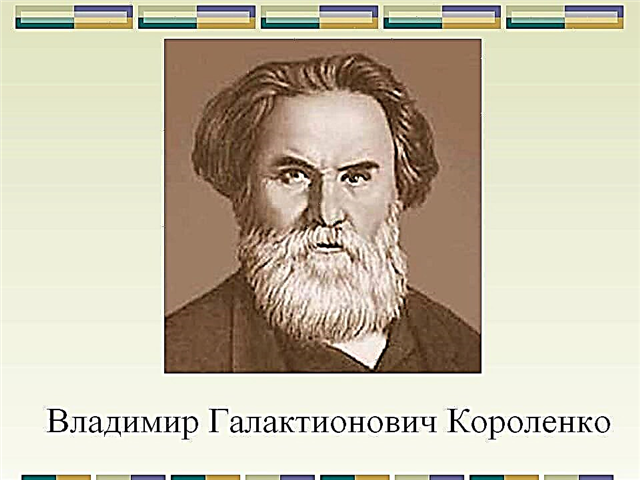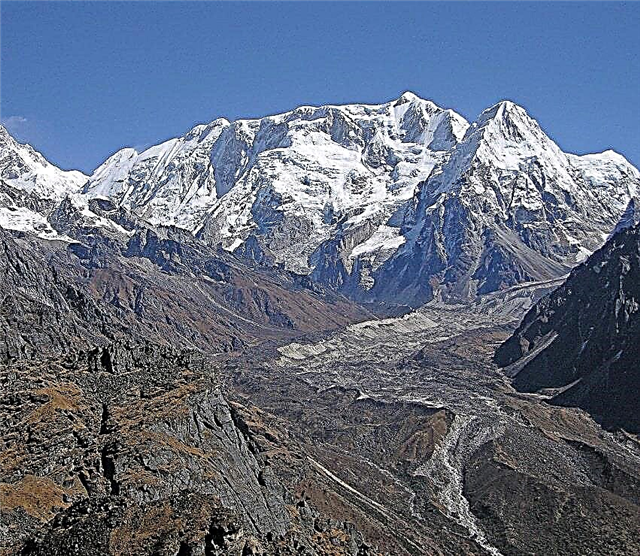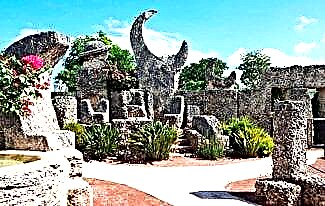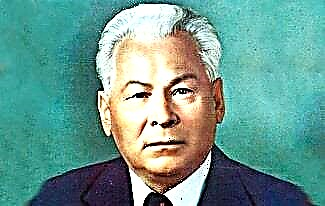In 1919, after the end of the First World War, England and France wanted Germany to sign the surrender agreement as soon as possible. In the defeated country at this time there were difficulties with food, and the allies, in order to finally weaken the position of the Germans, held back the transport with food going to Germany. Behind the shoulders of the warring parties, there were already gases, and the Verdun meat grinder, and other events that claimed millions of lives. And yet British Prime Minister Lloyd George was shocked that in order to achieve political goals, the lives of civilians must be endangered.
A little over 30 years passed, and Hitler's troops laid siege to Leningrad. The same Germans, who were starving in 1919, not only themselves forced the population of the three million city to starve, but also regularly fired at it with artillery and bombed it from the air.
But the inhabitants and defenders of Leningrad survived. Plants and factories continued to work in unbearable, inhuman conditions, even scientific institutes did not stop work. Employees of the Institute of Plant Industry, in whose funds were stored tens of tons of edible seeds of agricultural plants, died right at their desks, but kept the entire collection intact. And they are the same heroes of the battle for Leningrad, like soldiers who met death with weapons in their hands.
1. Formally, the date of the beginning of the blockade is considered to be September 8, 1941 - Leningrad was left without contact with the rest of the country by land. Although it was impossible for civilians to get out of the city by that time for two weeks.
2. On the same day, September 8, the first fire started at the Badayevsky food warehouses. They burned thousands of tons of flour, sugar, sweets, cookies and other food products. On a scale that we can estimate from the future, this amount would not have saved all of Leningrad from hunger. But tens of thousands of people would have survived. Neither the economic leadership, which did not disperse food, nor the military, did not work. With a very decent concentration of air defense systems, the military made several breakthroughs by the fascist aviation, which purposefully bombed food depots.
3. Hitler sought to capture Leningrad not only for political reasons. The city on the Neva was home to a huge number of defense enterprises critical to the Soviet Union. Defensive battles made it possible to evacuate 92 factories, but about 50 more worked during the blockade, supplying over 100 types of weapons, equipment and ammunition. The Kirov plant, which produced heavy tanks, was located 4 km from the front line, but did not stop work for a day. During the blockade, 7 submarines and about 200 other ships were built at the Admiralty shipyards.
4. From the north, the blockade was provided by Finnish troops. There is an opinion about a certain nobility of the Finns and their commander Marshal Mannerheim - they did not go further than the old state border. However, the danger of this step forced the Soviet command to keep large forces in the northern sector of the blockade.

5. The catastrophic death rate in the winter of 1941/1942 was facilitated by unusually low temperatures. As you know, there is no particularly good weather in the Northern Capital, but usually there is no severe frost there either. In 1941, they began in December and continued until April. At the same time, it often snowed. The resources of a hungry body in the cold are depleted at a hurricane rate - people literally died on the move, their bodies could lie on the street for a week. It is believed that in the worst winter of the blockade, more than 300,000 people died. When new orphanages were organized in January 1942, it turned out that 30,000 children were left without parents.

6. The minimum bread ration of 125 g consisted of a maximum of half flour. Even about a thousand tons of charred and soaked grain, saved at the Badayevsky warehouses, were used for flour. And for a working ration of 250 g, it was necessary to work a full working day. For the rest of the products, the situation was also disastrous. During the month in December - January, no meat, no fat, or sugar was provided. Then some of the products appeared, but all the same, from a third to half of the cards were purchased - there was not enough for all the products. (Speaking about the norms, it should be clarified: they were minimal from November 20 to December 25, 1941. Then they slightly, but regularly increased)

7. In besieged Leningrad, substances were actively used for the production of food, which were then considered food substitutes, and now are used as useful raw materials. This applies to soybeans, albumin, food cellulose, cotton cake and a number of other products.
8. Soviet troops did not sit out on the defensive. Attempts to break through the blockade were made constantly, but the 18th Army of the Wehrmacht managed to strengthen and repel all attacks.
9. In the spring of 1942, Leningraders who survived the winter became gardeners and loggers. 10,000 hectares of land were allocated for vegetable gardens; 77,000 tons of potatoes were torn off from them in autumn. By winter, they felled wood for firewood, dismantled wooden houses and harvested peat. Tram traffic was resumed on 15 April. At the same time, the work of plants and factories continued. The city's defense system was constantly improved.

10. The winter of 1942/1943 was much easier if this word can be applied to a blockaded and shelled city. Transport and water supply worked, cultural and social life was glowing, children went to schools. Even the massive importation of cats to Leningrad spoke of some normalization of life - there was no other way to cope with the hordes of rats.
11. It is often written that in besieged Leningrad, despite the favorable conditions, there were no epidemics. This is a huge merit of the doctors, who also received their 250 - 300 grams of bread. Outbreaks of typhoid and typhus, cholera and other diseases were recorded, but they were not allowed to develop into an epidemic.
12. The blockade was first broken on January 18, 1943. However, communication with the mainland was established only on a narrow strip of the shores of Lake Ladoga. Nevertheless, roads were immediately laid along this strip, which made it possible to speed up the evacuation of Leningraders and improve the supply of people who remained in the city.
13. The siege of the city on the Neva ended on January 21, 1944, when Novgorod was liberated. The tragic and heroic 872-day defense of Leningrad is over. January 27 is celebrated as a memorable date - the day when the solemn fireworks thundered in Leningrad.
14. “The Road of Life” officially had number 101. The first cargo was transported on horse-drawn sleds on November 17, 1941, when the ice thickness reached 18 cm. By the end of December, the throughput of the Road of Life was 1,000 tons per day. Up to 5,000 people were taken out in the opposite direction. In total, over the winter of 1941/1942, more than 360,000 tons of cargo was delivered to Leningrad and more than 550,000 people were taken out.

15. At the Nuremberg trials, the Soviet prosecution announced a figure of 632,000 civilians killed in Leningrad. Most likely, the representatives of the USSR voiced the death toll accurately documented at that time. The real figure could be one million or 1.5 million. Many died already in the evacuation and are not formally considered dead during the blockade. The losses of the military and civilian population during the defense and liberation of Leningrad exceed the total losses of Britain and the United States throughout the Second World War.










